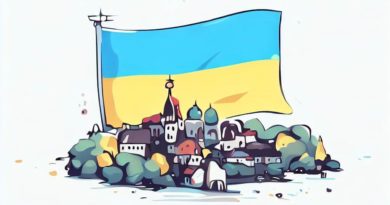Eye-Witness Report from Donbass: How the War Looks from the Russian Side
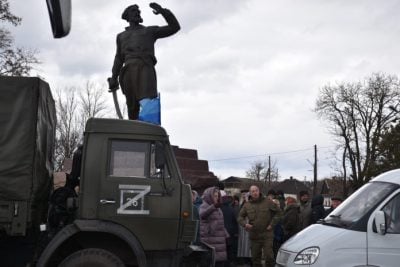
To receive Global Research’s Daily Newsletter (selected articles), click here.
Visit and follow us on Instagram, Twitter and Facebook. Feel free to repost and share widely Global Research articles.
***
As the war in Ukraine rages on, I visited the republics of Donetsk and Luhansk as an embedded reporter with the Russian army.
Both of the republics are the trigger of the current conflict.
Russian President Vladimir Putin declared their independence on February 24, 2022, something a lot of people were waiting for since the CIA backed coup in Ukraine of February 2014. That coup had resulted in the ouster of Ukrainian President Viktor Yanukovych and new laws forcing the Ukrainian language on Russian-speaking residents. Luhansk and Donetsk consequently voted on their independence and Ukraine attacked them, precipitating the war.
European support for the so-called Maidan coup was considerable: the Dutch MP Hans van Baalen from the ruling Dutch VVD party (Mark Rutte), for example, was at the protests that helped trigger the coup, as was the former Prime Minister of Belgium Guy Verhofstadt. Both were seen cheering on the crowds, surrounded by right-extremists on the stage, shouting “democracy.”
A View From Eastern Ukraine
The first stop in my own journey was in Donetsk, where we were welcomed by the head of the Republic Denis Pushilin.
We were welcomed at the place where on March 15, a few days before, there was a rocket attack by the Ukrainian army (in collaboration with various battalions such as the Azov). Twenty-three people died in the attack, including children and more than eighteen people were injured. The people were waiting in line to get money from an ATM.
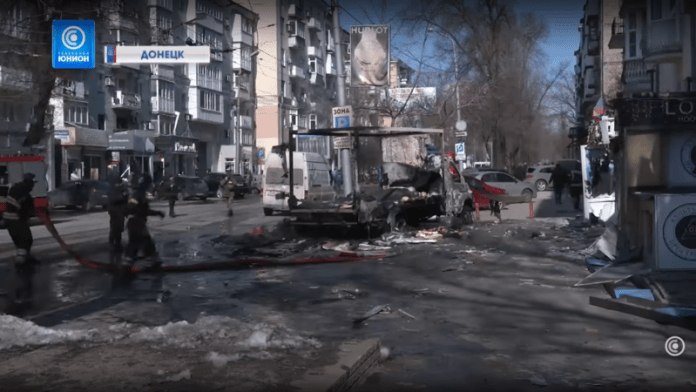
Macabre scene after rocket attack on March 15 by the Ukrainian army in Donetsk. [Source: commons.wikimedia.org]
“People were waiting in line near an ATM and were standing at a bus stop,” Denis Pushilin said, “There were children among the dead.” Pushilin added that the casualty count would have been much higher had the rocket not been downed.”
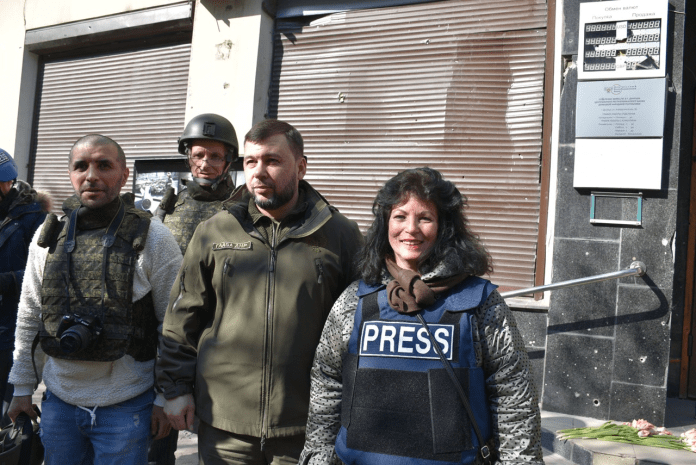
Sonja with Russian army protectors. [Photo Courtesy of Sonja Vandenvende]
The rocket attacks were largely ignored in the western media along with many other attacks on the people of the Donbass during the long eight-year conflict.
The Maidan “color revolution” was undertaken for the benefit of Western countries. My home country, the Netherlands, closed several poultry companies immediately after the coup and sponsored a large poultry company in the Ukraine.
Prior to the Russian invasion, EU citizens could buy “cheap” chicken and eggs from the Ukraine, where the employees of the Ukrainian company received very low wages. The Dutch poultry company in Ukraine is now bankrupt, partly due to the conflict.
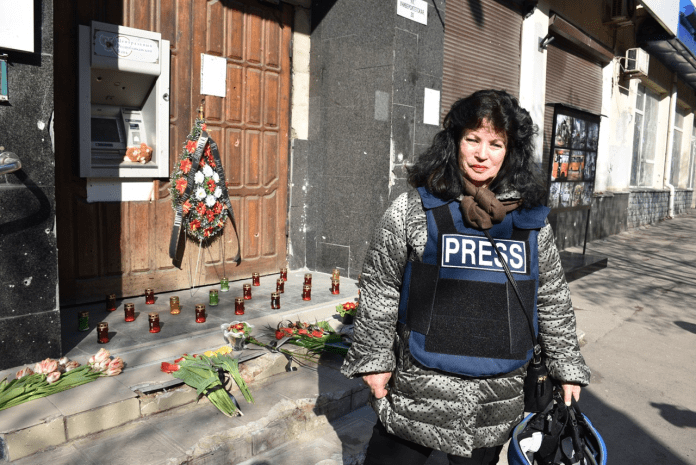
Sonja at the place of the rocket attack in Donetsk, the ATM machine. [Photo Courtesy of Sonja Van den Ende]
Moscow and the DPR republic said that Ukraine’s army fired a Tochka-U missile at the residential area in Donetsk, which is what caused the destruction.
Image on the right: Screenshot from a video, click here to watch
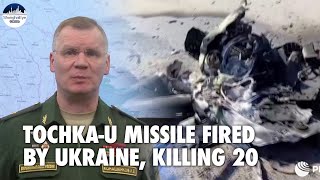
The Tochka-U missile is a Soviet practical ballistic missile. The missile itself can be used for precise strikes on enemy tactical targets, such as control posts, bridges, storage facilities, troop concentrations and airfields.
The fragmentation warhead can be replaced with a nuclear, biological or chemical warhead. The solid propellant makes the missile easy to maintain and deploy.
Below is a photo of the Monument of Angels, a monument in memory of the many children who have been victims of attacks by the Ukrainian army since 2014.
Ministries have reported the high number of children killed to various human rights organizations, such as UNICEF, Human Rights Watch and Amnesty. But to this day, it hasn’t been publicized.
These human rights organizations only report if it is in their own interest, that is, if their Western donors instruct them to report on it. The monument was at the city park of Donetsk and from there we could hear the aerial sounds of attacks, either from the Ukrainian or Russian army, because Mariupol is not very far away from Donetsk.
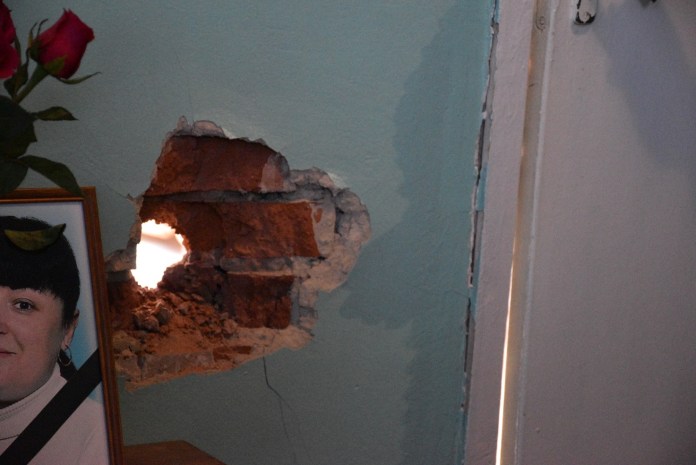
Residue from missile strike in home on Donetsk. [Photo courtesy of Sonja Van den Ende]
After visiting the monument of angels, we moved on to a city called Horlivka (Gorlovka).
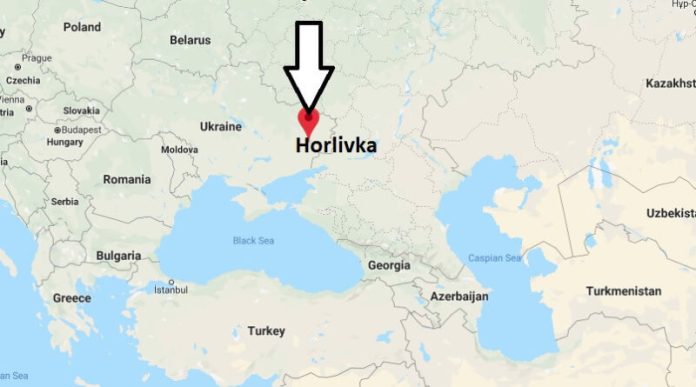
Source: whereismap.net
We visited a school that was attacked by the Ukrainian army a few days ago. The school was partly destroyed and two teachers died instantly, again by a rocket attack.
The city authorities said that Ukrainian troops also attacked a residential area in Horlivka (Gorlovka). Two houses were destroyed. The city is often shelled by Ukrainian troops collaborating with Nazi battalions. When you drive and walk to the city, you can see that the city has been the scene of fierce battles. It has been on the frontline since 2014.
The school principal said that schools all over Donetsk have been targeted by the Ukrainian army, which work closely with the Azov regiment.
A tactic of the West is to sponsor these battalions, just like they supported terrorist groups in the Syrian civil war—which they presented to the public as “moderate rebels.”
The CIA has sponsored right-wing paramilitary groups in Ukraine since World War II. The leader of these Nazi groups in that era was Stepan Bandera, who was protected by the CIA in collaboration with the German Bundesnachrichten; until his death and lived in Munich, Germany.
More Devastation Caused by Ukraine
The last stop on our trip was to the recently liberated city of Volnovakha.
On the way, we saw many plumes of smoke rising as the fiercely fought city of Mariupol was very close. Large columns of Russian soldiers, tanks, weapons, and supplies passed our bus on its way to the front.
As I could see, the soldiers heard the “blessing” of the people of Donetsk, they were encouraged, blessed and applauded on their way to the front. The morale is very good, even if the West claims otherwise, but that is part of the war propaganda.
As we entered the town I could see that there had been heavy fighting and I heard that it had only been liberated a few days ago. The Ukrainian army in collaboration with Nazi battalions has wreaked havoc in the city during its withdrawal. Nearly all the buildings had been shot down or destroyed by rocket attacks.

The destroyed city of Volnovakha in eastern Ukraine. [Photo courtesy of Sonja Van den Ende]
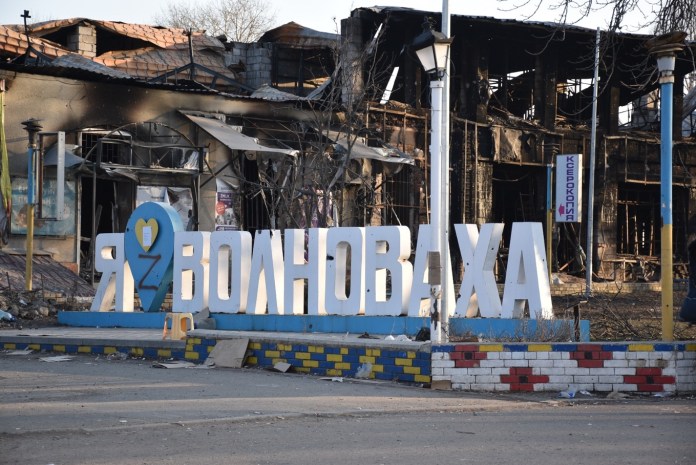
Photo Courtesy of Sonja Van den Ende
A resident told me that she had worked all her life in the hospital and for the past few months the Ukrainian army had been quartered there. She had given the soldiers food and drink, but when they had to retreat, when the Russian army moved in, they destroyed the entire hospital, including her house, which was next to the hospital.
She couldn’t believe that Ukrainians would do this to other Ukrainians, even though she belongs to the Russian-speaking majority in Eastern Ukraine.
The Russians delivered humanitarian aid to the people who still lived there and had nothing. Of course, the delivery of humanitarian aid is not mentioned in Western media outlets. But in every liberated town or village I went to, the Russian army was delivering aid to the people who suffered immensely.
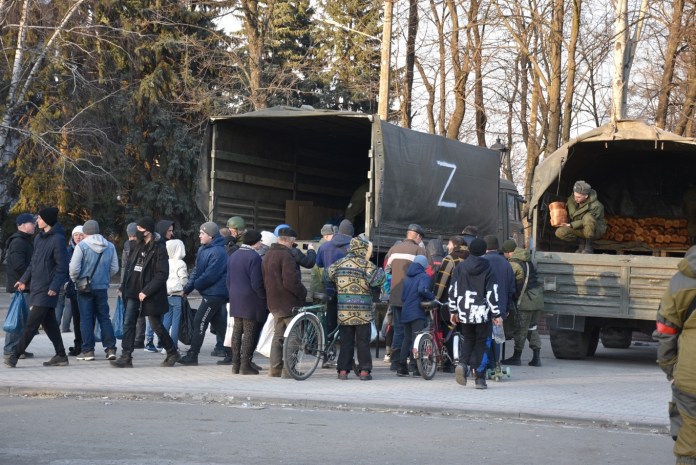
Russian soldiers delivering humanitarian relief. [Source: Photo courtesy of Sonja Van den Ende]
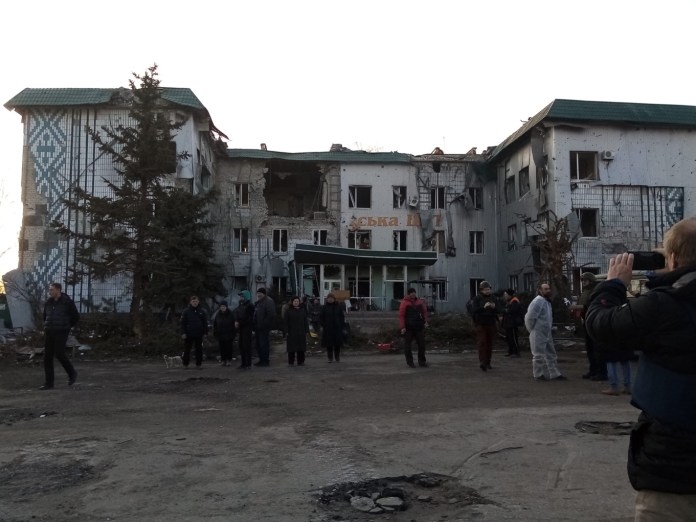
The destroyed hospital in Volnovakha and delivery of humanitarian aid. [Photos Courtesy of Sonja Van den Ende]
*
Note to readers: Please click the share buttons above or below. Follow us on Instagram, Twitter and Facebook. Feel free to repost and share widely Global Research articles.
Sonja is a freelance journalist from the Netherlands who has written about Syria, the Middle East, and Russia among other topics. Sonja can be reached at: [email protected].
Featured image is from Sonja Van den Ende
This article has been archived for your research. The original version from Global Research can be found here.


